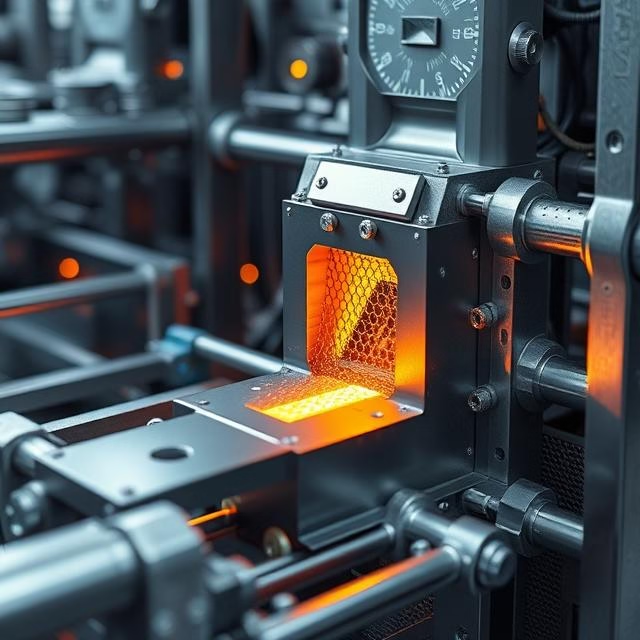 Daily tech news
Daily tech news
- A strange quantum effect could power future electronicsRice University physicists confirmed that flat electronic bands in kagome superconductors aren’t just theoretical, they actively shape superconductivity and magnetism. This breakthrough could guide the design of next-generation quantum materials and technologies.
- Room-temperature quantum breakthrough freezes motion without coolingETH Zurich scientists have levitated a tower of three nano glass spheres using optical tweezers, suppressing almost all classical motion to observe quantum zero-point fluctuations with unprecedented precision. Achieving 92% quantum purity at room temperature, a feat usually requiring near absolute zero, they have opened the door to advanced quantum sensors without costly cooling.
- Tiny gold “super atoms” could spark a quantum revolutionScientists have found that microscopic gold clusters can act like the world’s most accurate quantum systems, while being far easier to scale up. With tunable spin properties and mass production potential, they could transform quantum computing and sensing.
- Scientists unveil bioplastic that degrades at room temperature, and outperforms petroplasticsPlastic pollution is a mounting global issue, but scientists at Washington University in St. Louis have taken a bold step forward by creating a new bioplastic inspired by the structure of leaves. Their innovation, LEAFF, enhances strength, functionality, and biodegradability by utilizing cellulose nanofibers, outperforming even traditional plastics. It degrades at room temperature, can be […]
- Building electronics that don’t die: Columbia's breakthrough at CERNDeep beneath the Swiss-French border, the Large Hadron Collider unleashes staggering amounts of energy and radiation—enough to fry most electronics. Enter a team of Columbia engineers, who built ultra-rugged, radiation-resistant chips that now play a pivotal role in capturing data from subatomic particle collisions. These custom-designed ADCs not only survive the hostile environment inside CERN […]
- Digital twins are reinventing clean energy — but there’s a catchResearchers are exploring AI-powered digital twins as a game-changing tool to accelerate the clean energy transition. These digital models simulate and optimize real-world energy systems like wind, solar, geothermal, hydro, and biomass. But while they hold immense promise for improving efficiency and sustainability, the technology is still riddled with challenges—from environmental variability and degraded equipment […]
Microsoft’s Azure Quantum team is developing quantum chips using topological qubits, leveraging Majorana zero modes for stability. Their research on superconducting nanowires could accelerate quantum computing advancements. This article explains Majorana physics, its role in quantum systems, and Microsoft’s roadmap...
Explore the advanced physics of metals beyond conductivity. Learn about superconductivity, AC conductivity, and electromagnetic interactions....
Understanding the conductivity of metals involves exploring their high electron mobility, Ohm’s law, and quantum mechanical models like Drude and Sommerfeld. This article discusses how metals conduct electricity, the role of energy bands, and how electron interactions shape conductivity, highlighting...
Matching transistor layouts is crucial for minimizing electrical variations, especially in analog and mixed-signal circuits like differential amplifiers. Proper design ensures symmetry, precision, and low distortion. Techniques such as aligning transistors along isotherms, matching current orientation, maintaining consistent area-to-perimeter ratios,...
Categories
Embedded systems (32)
Actuators & Motors (7)
Communication (3)
Core tutorial (18)
Display tutorial (3)
Analog & Digital (1)
Spintronics & Physics (17)
Atom theory (1)
Magnetism (10)
Off-topic (3)
Semiconductor Physics (3)
Research & Writing (39)
Academic writing (3)
Citation & Referencing (14)
CV (3)
Dissertation writing (15)
Off-topic (4)
Personal Blog (2)
Contact
If you have any queries or need to reach out to me, please refer to my contact page, accessible via the link provided below.
Archives
Tagcloud
PIC16F877AmicrocontrollerAcademic writingcitationtutorialSpintronicsDissertationinterfacingAllAPA StyleMagnetic materialscontrolReferencesEmbedded systemAPA guidelinesCVLLG equationEinsteinquantum mechanicsInverse spin Hall effectMOSFETciteSpin pumpingIEEEion implantationFermi levelSkillsMOSFET scalingresearchinterruptPWMquantum physicsIGBTprofessional developmentMagnetization dynamicsPIC microcontrollerPID tuningAPA referencePlagiarismI2CTMRSemiconductor DevicesGMRacademic researchSpin-transfer torque





